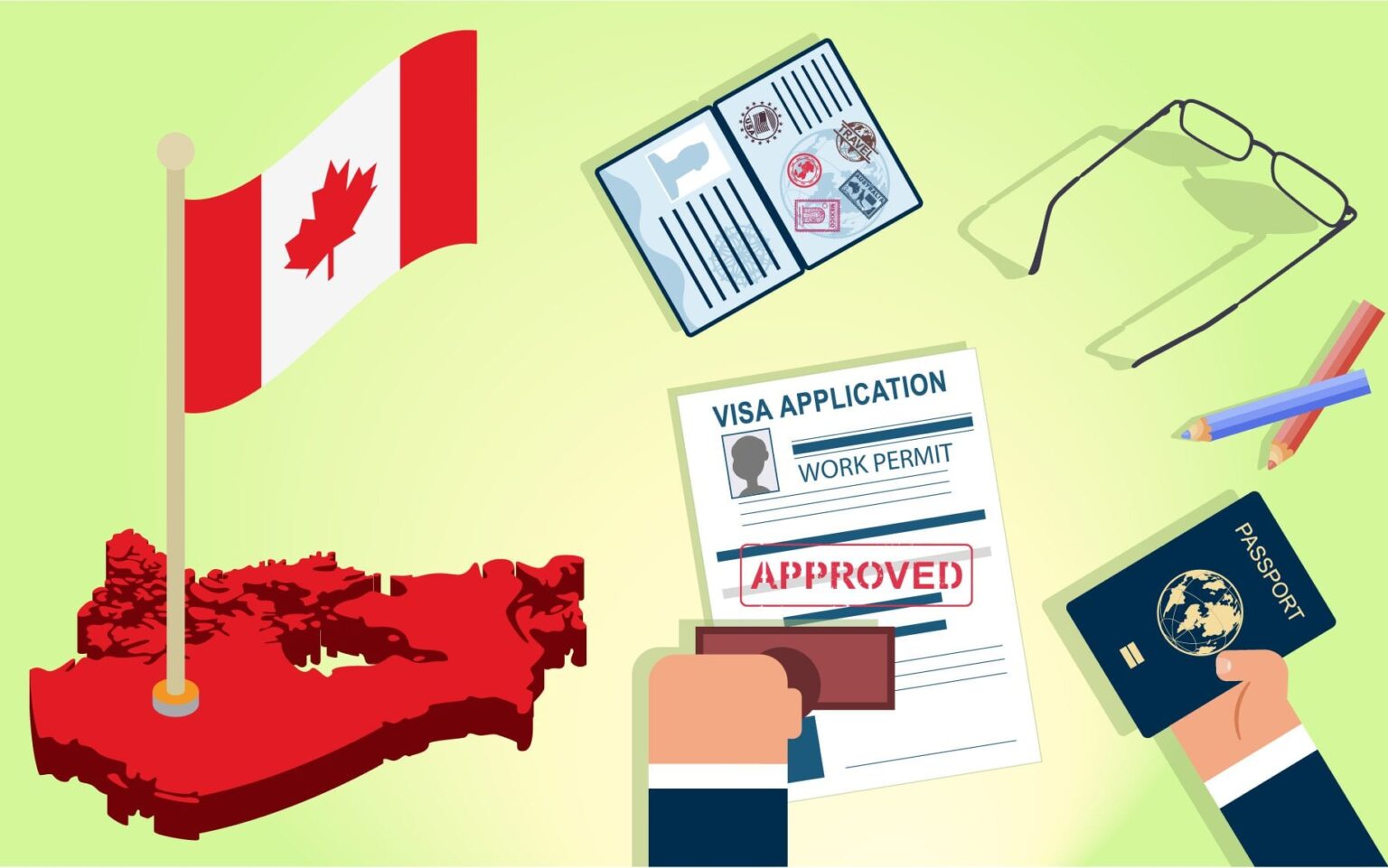Starting a new job can be intimidating, but it can also be exciting, depending on how you look at it. Canada is frequently the top choice for foreign nationals seeking a new career in a different country.
The booming economy of the north is a significant draw for those looking to increase their earning potential while taking in the full splendour of the Canadian landscape. However, before you move to pursue your career goals, you’ll need to obtain a valid Canadian work permit.
A work permit in Canada allows you to work legally, earn an income, pay taxes, and conduct business. To obtain a work permit, you must complete and obtain several documents, which together make up your Canada work permit application pack.
How you fill it out will determine whether or not your application is successful, so be thorough. Let’s take a look at what you’ll require.
What is the Definition of a Work Permit?
A work permit is a written authorization issued by a Canadian immigration officer that allows you to work in Canada as a permanent resident of another country.
To get one, you’ll need to gather a long list of documents, including a job offer and your biometrics, to name a few. When a work permit is granted, it is only valid for the employer, position, and period specified.
It is issued in response to an Employment and Social Development Canada (ESDC) Labour Market Impact Assessment (LMIA) or an offer of employment from an LMIA-exempt employer.
Is a Work Permit Required for Me?
You will need a work permit if you do not have Canadian citizenship or permanent residency and wish to work in Canada for a limited time.
While you may be exempt from needing one in some circumstances, keeping your employment status legal is generally required.
What is an LMIA (Labor Market Impact Assessment)?
A Labour Market Impact Assessment (LMIA) is a document issued by Employment and Social Development Canada (ESDC) that allows an employer to hire a temporary employee.
The ESDC evaluates an employer’s LMIA application to see how hiring a temporary foreign worker will affect the job market in Canada. They will then send the employer a positive or negative LMIA letter. Your employer must provide you with a copy of the letter to include it in your work permit application packet.
Because an LMIA is granted for a specific amount of time, the work permit you receive is only valid for that time. If you need a work permit for a more extended period of time, you’ll need to obtain another LMIA.
Now that you know what a work permit is, let’s go over everything you’ll need for your Canadian work permit application. Remember that submitting an incomplete work permit application package will result in your application being rejected.
You’ll require
- A copy of your prospective employer’s offer of employment.
- Evidence that you are qualified for the position that has been offered to you.
- At least two photo IDs are required.
- Your biometric information (possible at this stage).
- A copy of your prospective employer’s Labour Market Impact Assessment (LMIA).
- A job offer to a foreign national who is not subject to a labour market impact assessment.
You’ll need to fill out the following forms:
- Outside of Canada, an application for a work permit is submitted (IMM 1295).
- Authorization to Disclose Personal Information to a Designated Person (IMM 5475).
- Checklist for Documents (IMM 5488).
- Information about the family (IMM 5645).
- Schedule 1: Temporary Resident Visa Application.
- Common-law Union Statutory Declaration (IMM 5409).
- Representatives Use (IMM 546).
Documents Required
You’ll need a valid passport that allows you to return to the country where it was issued and two ID photos of yourself and any family members accompanying you.
- Employment Proof in Canada: Your employer should give you an Offer of Employment number if your work permit is LMIA-exempt. If you require an LMIA, your prospective employer should provide you with a copy of the ESDC’s LMIA and your employment contract.
- Relationship Evidence: If you bring family members to Canada, you must submit marriage and birth certificates. You’ll need to fill out the Statutory Declaration of Common-Law Union if you’re in a common-law relationship and your partner will join you in Canada (IMM 5409).
- Nationality Proof: If you are not a citizen of the country or territory from which you are applying, you must provide proof of your current immigration status in that country or territory.
- Certified Copies: You must ensure that all copies of your Canadian work permit application documents are certified, as with any official undertaking. This means that a person with authority, known in some countries as an oath commissioner, will have to examine the original document and compare it to the copy before stamping and dating it.
- Translations: You must also provide certified copies of original documents that have been translated, including the original document and the English or French translations. Furthermore, if your translator is not a professional, you must obtain an affidavit from them.
- Medical Examinations: You may need to undergo a medical examination if you want to enter Canada.
Submitting Your Biometric
Biometrics is an integral part of the application process for a work permit. Your fingerprints will need to be taken at a biometric centre. If you bring your family along, they’ll also need theirs taken. You’ll also need your photo taken as part of your biometrics.
If you find yourself in Canada and apply for a work permit, you must do so at a designated Service Canada Centre.
If you submit biometric fingerprints and photos, you won’t need to include paper photos in your work visa application.
Find out more about LMIA and it’s procedure from the official Canada Gov Website


